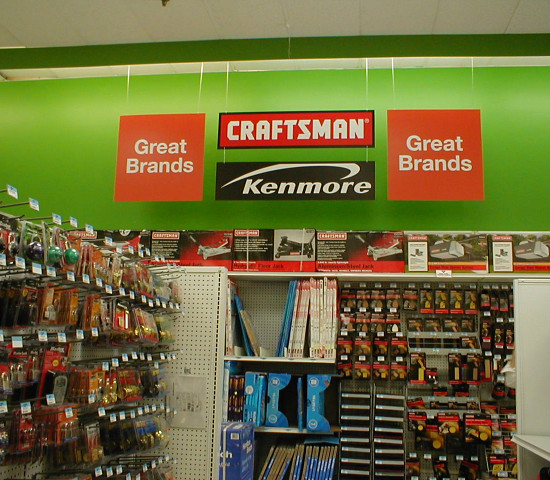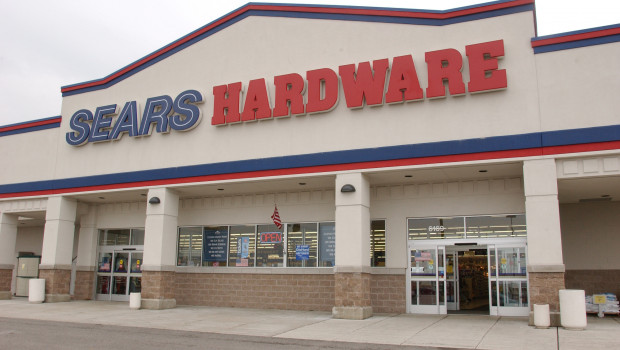Several years ago when Edward Lampert, an amazingly successful and rich hedge fund guru, became the dominant shareholder of both Sears and Kmart, once two of America's best known retailers, no one knew quite what to expect from this non-retail executive. The past two years have been telling the tale, and it is a sad story for these once famous and respected retailers. Overall sales are slipping; same-store sales are dropping quite substantially; some advertising has been cut back, so the two companies' presence in the marketplace is continuing to decline, too. Some investor experts claim Lampert and stockholders in Sears Holdings will still profit because the companies can sell some of their real estate, but others contend this is wishful thinking, because many of Sears' and Kmart's locations are no longer prime real estate. This is especially true for Sears, which years ago became a prime anchor in many major shopping malls. Today, however, fewer and fewer consumers are shopping in these big malls; instead they prefer to shop in self-standing big-box stores or in smaller strip malls that are often anchored by big-box retailers and strong specialty chains. At one point, Lampert claimed same-store sales gains were not important, though investors and analysts rely heavily on them in measuring retailing health. In a letter of March 2006 to shareholders, he claimed the measurement "is vastly overrated." Now he admits it is important to some degree, but only as one measure of a retailer's performance. The company's same-store sales dropped 4 per cent for the nine-week period ending in July, more than had been expected. In June, Wal-Mart's same-store sales gained 2.4 per cent and Target's jumped more than 3 per cent. Sears, down 4 per cent, is suffering a six-year-long history of declining sales. Kmart, which directly competes with both Wal-Mart and Target, said sales had declined in almost all categories as it reported an overall same-store 3.9 per cent drop. Its same-store sales dipped 4.7 per cent in the first quarter. America's lagging housing market isn't helping either, because Sears has been America's leader in major appliance sales for many years. Lowe's has sold appliances for years as well, but concentrated on rural markets in the early stages. Since its suburban expansion it has become a stronger market presence, as has Home Depot, which added major appliances several years ago. Sears' market share was estimated at 29.2 per cent in 2004, and at 26.9 per cent last year. Lowe's' share grew from 10.9 per cent to 12.6 per cent in the same period. Menards, the strong Midwestern home centre chain, now also sells appliances. In addition, specialty retail chains like Best Buy keep chipping away at Sears' market share. No longer does Sears have to worry only about small independent appliance retailers. Its 800 store locations now face thousands of modern, well financed big-box appliance competitors. In an effort to improve appliance sales, Sears has added appliances to many of its Sears Hardware stores. This gave it a few hundred more outlets, but it still lags greatly behind in the number of competitive locations it faces, and its Sears Hardware stores do not attract anywhere near the traffic of a Best Buy, Home Depot or Lowe's. In its latest report, Sears noted that home appliances declined more than most other categories. Home appliances accounted for about 15 per cent of Sears Holdings' revenues last year. By limiting Sears advertising, Lampert's management is influencing another major factor in the company's decline. For decades Sears was one of retailing's heaviest advertisers, featuring weekly multi-page circulars. While it still does advertise, the quantity and size of ads is down sharply from historical levels. This reduced exposure simply does not keep the company's name in front of consumers as was previously the case. Kmart, however, continues to run weekly multi-page circulars with which it competes against Target. Lampert has also cut back on employment, hurting customer service in the process. He is never afraid to try new things. He experimented with adding major appliances to some Kmart locations, as well as the company's famous Craftsman brand. The appliance tests have already been taken out of some Kmarts or severely limited to lower priced refrigerators. The jury is still out on the success of adding Craftsman to Kmart. Craftsman is America's number 1 tool brand name and is used on lawn and garden power equipment, hand tools and power tools. There have even been rumours that Lampert might sell the brand name, since it is so powerful. Lampert continues to experiment. One possible way is to open dealer-owned Sears stores inside Kmart units. Another is to beef up its website, figuring it is easier and less costly to boost sales that way than by refurbishing stores. Where will it end? Will Sears survive? The jury - the American buying public -hasn't cast its final vote yet.

Edward Lampert's experiments include offering the powerful Craftsman brand in Kmart stores.





